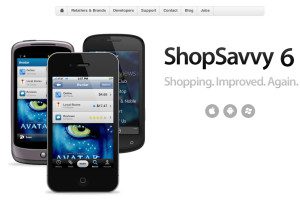 Behold, the many ways to “clip” a coupon. Long-ingrained in the collective memory of many as the stuff of super-savers (and Sunday newspapers), a bevy of businesses and app developers are remaking the way a discount is served.
Behold, the many ways to “clip” a coupon. Long-ingrained in the collective memory of many as the stuff of super-savers (and Sunday newspapers), a bevy of businesses and app developers are remaking the way a discount is served.
Digital discounts – as an industry – are heating up. Most notably, digital-coupon company RetailMeNot is prepping for a $230 million IPO it filed for last month. And strategic-advertising and marketing-intelligence firm Kantar Media has seen a 28% year-over-year increase in the first quarter for the number of digital-coupon events it tracked with Marx, its consumer-promotions monitoring solution.
“Manufacturers are creating new, effective and targeted online offers each and every day that shoppers can obtain digitally and may share socially,” said David Hamric, general manager for Kantar Media Marx.
With the discount continuing its upward climb and evolution, how exactly can brands and marketers gain the most footing? Strive for simplicity, said Jeff Fagel, vice president of marketing for edo Interactive. “Anything that adds work on the consumer side – from scanning QR codes, to printing coupons – sounds good on paper, but today’s deal-driven consumer quickly tires of novelty, especially when it requires a lot of effort,” he said.
Another way marketers can uncover more downloads is by closing the “redemption loop from online and mobile exposure to in-store results,” he said, in order to pave way for an “omnichannel” discount strategy.
If anything in marketing is ripe for digital reinvention and disruption, it’s the promotional coupon, said Tim Hanlon, founder and CEO of investment-advisory and strategic-consulting firm The Vertere Group. “Mobile technology, in particular, is poised to drive most of it, where discounts, loyalty and location all come together rather elegantly in an environment where both business efficiencies and consumer satisfaction align,” he said. (See Hanlon’s take on the conundrum he calls “Loyalty Armageddon.”)
In no particular order, here are a few ways loyalty and discounts are evolving (and being monetized).
The Social-Engagement Apps
Although the “verdict is still out” for social startups’ end-to-end ability to harness brand connection, loyalty and revenue, the social-engagement set – think Path, Shopkick and Foursquare – attract brands with the promise of driving mobile consumer engagement. Shopkick, for instance, lets users rack up “kicks” at retailers like Best Buy and Macy’s, add them up and apply them later for rewards and discounts.
The Discount “Marketplace”
ShopSavvy has experienced 30 million direct downloads of its app and 100 million downloads of its app-licensing technology. ShopSavvy first started as a utility allowing consumers to scan product barcodes and search for those products online. On the brand side, ShopSavvy has launched a ProductCloud where marketers have access to real-time inventory and pricing data on 130 million mobile users. Additionally, an AdOns platform lets brands deliver targeted messages to shoppers in-store through the ShopSavvy app on a cost-per-targeted-experience (CPE) basis.
The Card-Linked Offer
With data-driven card-linked offers, the main use case for marketers is connecting online advertising with tangible, cross-channel results. Although privacy has been a point of debate, the consumer is, in theory, enabled access to a personalized offer and discount immediately accessible from their credit or debit cards. Linkable Networks, for instance, bridges the gap between advertisers, consumers and their financial institutions by delivering online and offline promotions to shoppers by way of their registered credit or debit card or PayPal account. After they click, scan or text a “linkable” from a TV, radio, print, banner, text, video or mobile ad, the discount is applied. Edo Interactive, another provider of a card-linked offer platform, has run promotional offers for more than 200 national and local advertisers and raised an additional $15 million line of equity last fall, bringing its financial backing to $54 million.
The Data-Driven Discount
Google, which acquired Zave Networks in late 2011, recently debuted digital coupon product Zavers by Google, which, according to Google Commerce, “gives manufacturers new ways to measure coupon redemptions and analyze consumer preferences so they can manage distribution, tailor campaigns and optimize budgets for maximum ROI” via real-time data. Zavers’ e-coupons may be applied directly to customers’ rewards cards for automatic redemption at checkout. Zavers offers functionality for marketers to track the “lifetime of online coupon distributions” through the Google ad network.
The SmartPhone Saver
You might call SnipSnap the “paper-saver.” In one short year since the startup launched and earned finalist distinction at TechCrunch Disrupt, the application has grown to 1 million users who have “snipped” 20 million coupons. SnipSnap’s app lets shoppers scan, save and redeem printed coupons for retailers (like Bed Bath & Beyond) and restaurants. Manufacturers’ coupons are not supported, yet. In terms of targeting, SnipSnap allows retailers “to target users based on their past coupon-snipping history” through keywords or coupon phrases, categories and location. “We’re just now starting to experiment to get some additional reach, leveraging third-party ad networks (to do) a little bit of retargeting, but mostly we’re just using location right now,” said Ted Mann, co-founder and CEO of SnipSnap.













